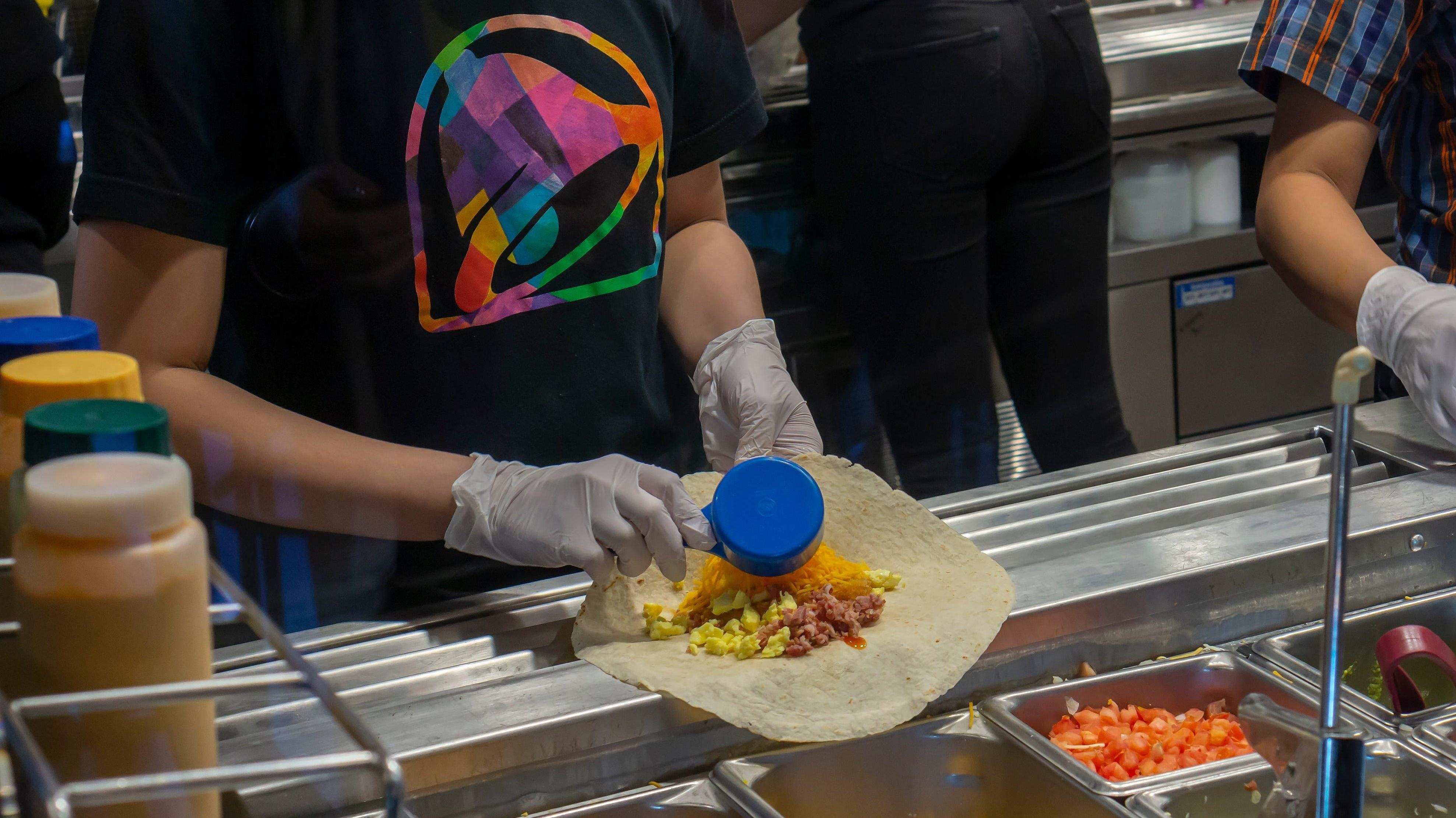Taco Bell's Rules For Perfect Fast Food
Taco Bell's knack for innovation is remarkable—and it's guided by strict tenets.
When you think of innovative fast food chains, the first place that comes to mind is probably Taco Bell. Or at least, it should be. After all, this is the company responsible for coming up with Doritos Locos Tacos (a taco shell made of Doritos, who would have thought?!) and the hexagonal architectural marvel known as the Crunchwrap Supreme. How Taco Bell manages such feats has remained something of a mystery... until now.
It might seem like Taco Bell's runaway hits are simply the result of fun culinary experimentation, but they're anything but. An impressively in-depth feature published to The New Yorker this week by Antonia Hitchens outlines how the brand approaches its wackiest concoctions—and the chain is dead serious about its novelty items. Here are some of the rules that guide Taco Bell's thinking.
Assembly is just as important as the flavors
Right off the bat, Hitchens makes it clear that Taco Bell's culinary development team doesn't simply involve a pair of stoners and a fully equipped test kitchen. Rather, it consists of 60 developers who pore over the challenges presented by each and every test item. This includes issues at both the assembly stage and the eating stage; for instance, the team needs to figure out whether certain menu items might result in a shattered disaster of meat and crunchy tortilla shell shards all over the floor. It's easy to forget that our experience of eating fast food extends beyond the taste of the food itself, but Taco Bell focuses on this aspect intently.
Food can’t be overly complicated
A novelty item can be pretty amazing and still be discounted from a logistical standpoint. For example, imagine having to learn how to fold something like a Grilled Stuft Nacho at breakneck speed during lunch rush. Or consider the complexity of grilling cheese on the exterior of a burrito, the trick of which involves something like layering the cheese with parchment paper while cooking. Now picture doing it dozens of times per shift.
New product ideation begins on a grand scale, but always runs through a workflow filter to consider variables such as ease of assembly, efficiency, and simplicity.
Suppliers must make their products work for Taco Bell
No innovation can happen without the right ingredients on hand, and sometimes those come from strategic partnerships. Taco Bell's most recent limited-time menu item, the Yellowbird Nacho Fries, are named after the hot sauce company that helped develop the fries' new ranch sauce. (The company has previously partnered with hot sauce company TRUFF to produce a version of the Nacho Fries, too.)
Frito-Lay supplies Taco Bell not only with its Doritos Locos Tacos shells, but with all of its shells, a fact I never knew prior to reading The New Yorker's deep dive. As a supplier to one of the top five biggest fast food chains in the nation, Frito-Lay, and all of Taco Bell's other vendors, need to do plenty of testing to ensure their products fit the parameters, however Taco Bell intends to use them.
Supply chains must be considered
We might joke about how Taco Bell's menu items all feature the same few ingredients—cheese, meat, sour cream, etc.—remixed slightly differently. But that's actually a strategic advantage.
If, say, Taco Bell wants to add a particular component to a new menu item that the company doesn't already have in its normal ingredient roster, the corporation is so large that these additional needs might strain the supply chain. It's one thing if thousands of consumers suddenly snap up grocery store feta to recreate a TikTok pasta at home, but it's another thing entirely when an enormous corporation needs enough cilantro to supply more than 7,200 U.S. locations for just one limited-time offering.
Marketing is key
Taco Bell items such as the Beefy Crunch Burrito and the Mexican Pizza already have an army of fans hyping the product for free. But the company can't just sit around and rely solely on the enthusiasm of customers to drive demand for its products. It has to constantly be part of the conversation.
That's why there's always something big brewing, whether it's a breakfast-focused ad campaign starring Pete Davidson, a TikTok video of Doja Cat rapping about Taco Bell, or a Dolly Parton–led musical. If you aren't at least vaguely aware of Taco Bell's current menu promotions, we have to conclude you've never watched TV, listened to the radio, or scrolled through the internet.
Listen to customer feedback
Giant brands like Taco Bell can seem like an impenetrable brick wall, which means it's easy to spout off about them on social media. But if you take to Twitter to complain about the flavor of, say, your Crispy Chicken Sandwich Taco, it's very likely someone at the company will see it.
If you don't believe me, there is an honest-to-god situation room at Taco Bell's headquarters (called the Fish Bowl!) filled with screens that display what people are saying across social media. That's some serious dedication to market research.
The New Yorker story is really intricate, detailing the history of the storied Crunchwrap Supreme, how the Doritos Locos Tacos came to be, and even how the hard shell taco, which was a nonexistent fast food dish in Taco Bell's early days, was adapted and scaled up to fast food volume. If you're a fan and have some time, you'll want to read the entire feature here. This is your chance to see what goes on behind Taco Bell's closed doors; you'll find that the machine pumping out these highly creative fast food items has way more cogs than you imagined.
